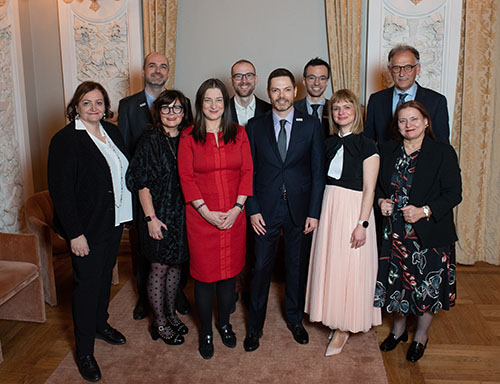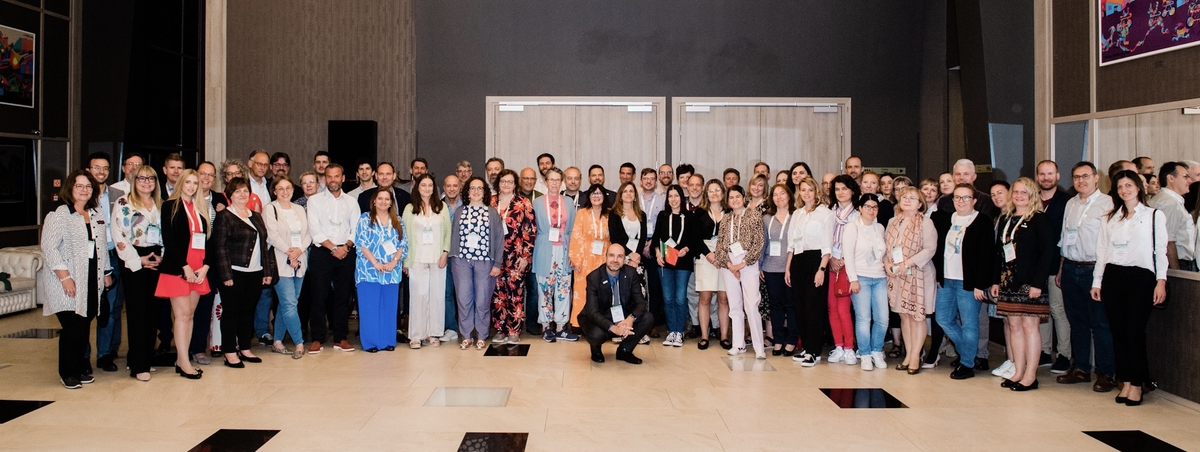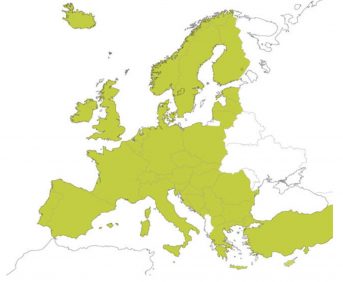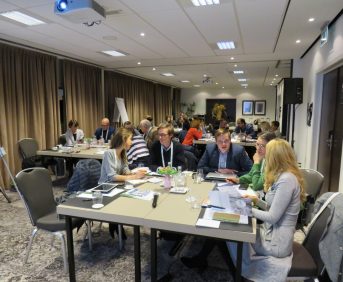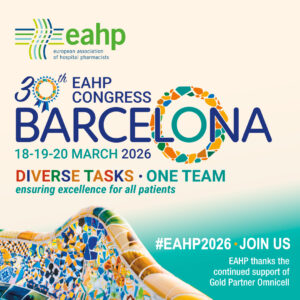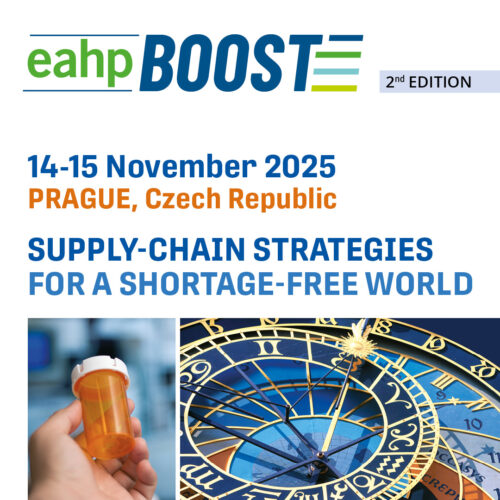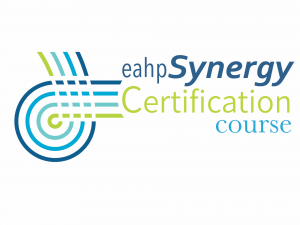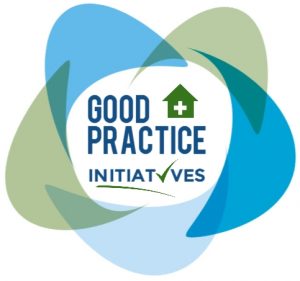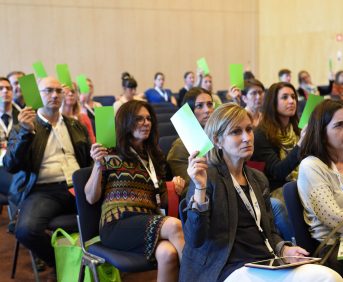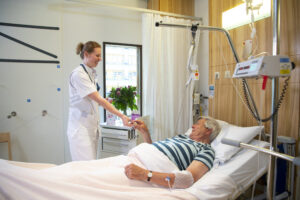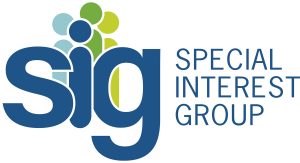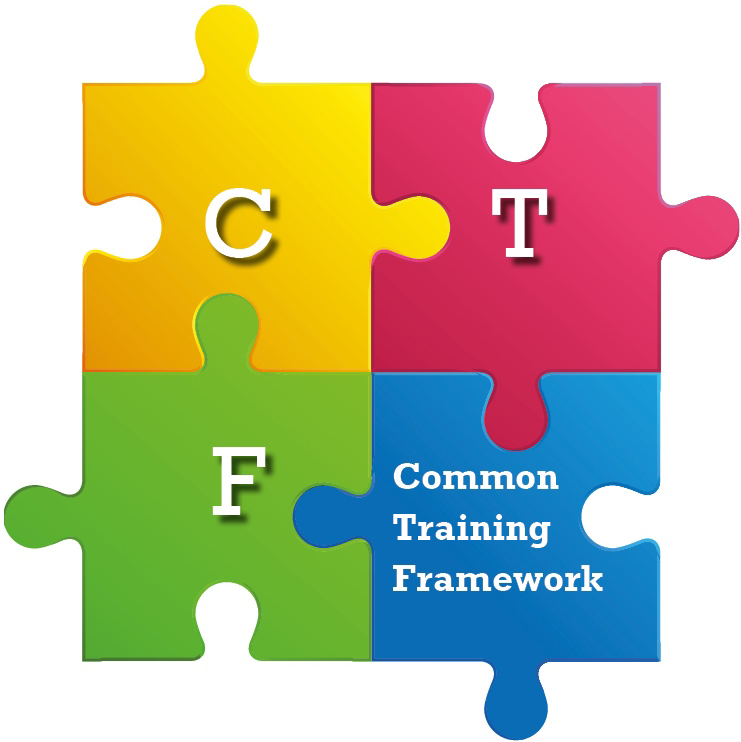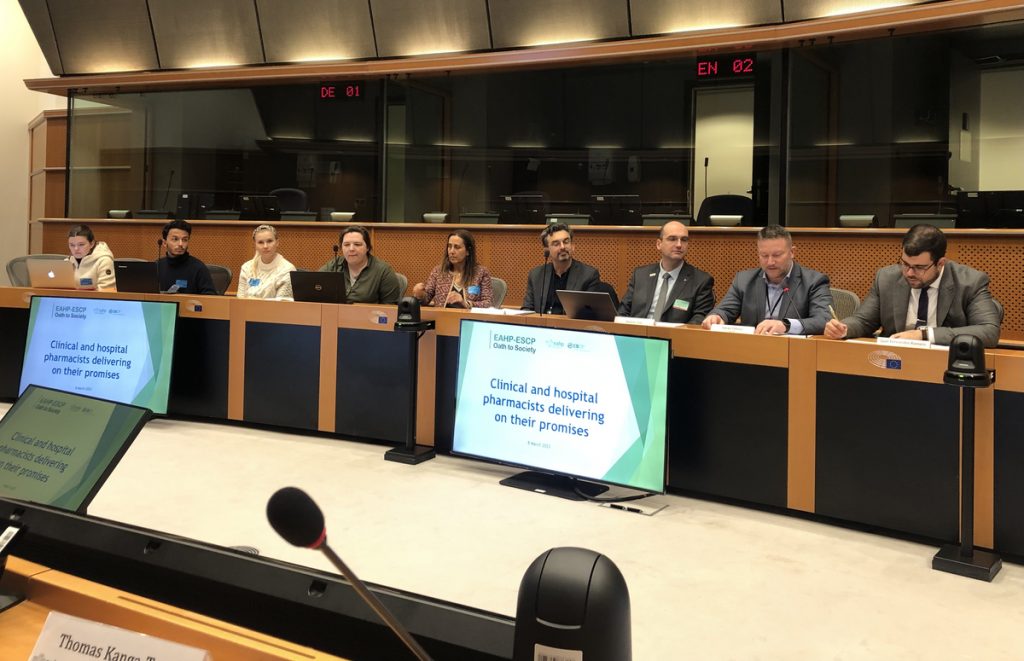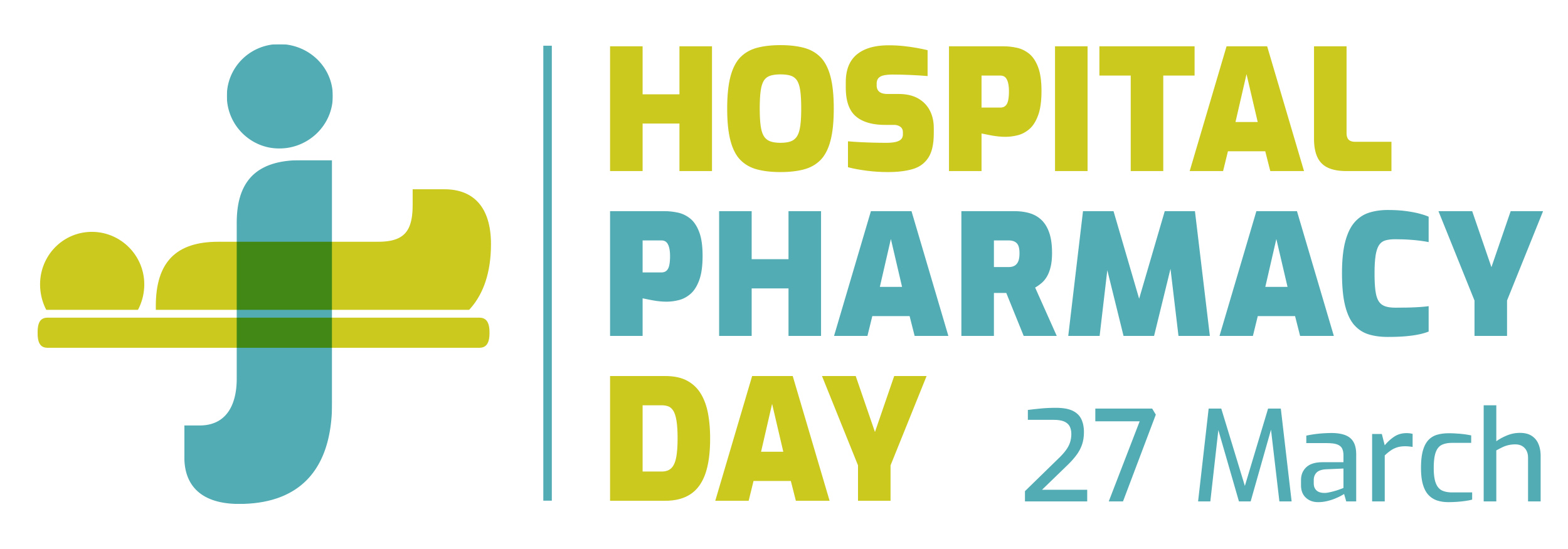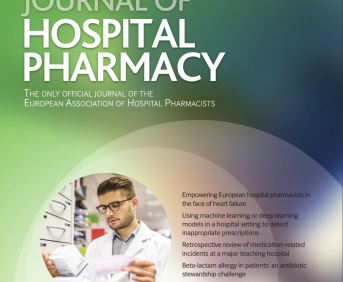EXCEPTIONAL HEALTH SITUATIONS: OBSERVATION OF AN IMMERSIVE EXERCISE IN THE HOSPITAL PHARMACY AND FEEDBACK
Pdf

European Statement
Patient Safety and Quality Assurance
Author(s)
Delphine BODEN, Laura RODRIGO, Rachel MAHE, Olivier SELLAL, Maxime PARE, François RONDEAU
Why was it done?
The main objective was to test the activation of our Pharmacy-Sterilization-Operational-Unit (PS-OU), established in December 2022, and to work on its interaction with the others OU of the different hospital services. The second aim was to continue the training of pharmaceutical teams on exceptional health situations (EHS).
What was done?
In March 2024, our hospital pharmacy (HP) took part in an inter-departmental exercise based on the scenario of managing a massive influx of polytrauma victims at our hospital. The quick engagement of mobile medical units and sterilization department, dependent on the HP, is indeed a key element in the optimal care of victims, whether in hospital or pre-hospital.
How was it done?
Two interns and one pharmacy technician, with an analysis framework, were in attendance as observers through the exercise. During the PS-OU activation, various points were observed: global crisis management, task assignment and communication between the members, data centralization and communication with the others OU, efficiency and speed of response to problems… A feedback questionnaire was then sent to the 9 main players (PS-OU members, on-call pharmacist…). Intra-HP and inter-departmental feedback were provided immediately, then a posteriori.
What has been achieved?
For 3 hours, our HP had activated its OU to provide the best possible response to this exercise. The observation of this exercise pointed out the rapid activation and efficiency of the PS-OU (by the on-call pharmacist, on the order of the head of department), so a great intern and extern communication. Areas for improvement were raised, such as the optimization of available tools. 89% of players answered the feedback questionnaire. The communication was considered operational and the PS-OU essential by all the respondents. They also feel that this type of exercise is needed (75%) and helps prepare them for EHS (88%).
What next?
Aims of this exercise were achieved. Preparing, hosting and then analyzing this kind of exercise, although seemingly time-consuming, enables us to validate and, where required, consolidate the intended organization for EHS. These results also strengthen our determination to pursue our annual exercise program. Shortly, an exercise with the supply members of our PS-OU will be organized, in order to train the less experienced members as well.
RESEARCH AND INNOVATION TRAINING ITINERARY FOR RESIDENT INTERNAL PHARMACISTS
Pdf

European Statement
Education and Research
Author(s)
Cristina González Pérez, María de la Paz Pacheco Ramos, María de la Torre Ortiz, Virginia Puebla García, Jesús Airam Domínguez Cháfer, Alba de Diego Peña, Nuria Fernández Piñeiro, José Julio Gómez Castillo, María Fernández-Vázquez Crespo, María Teresa Benítez Giménez
Why was it done?
The official hospital pharmacy training program, established in 1999, includes outdated and incomplete content on research. This update aims to ensure essential R&I knowledge, create a reference framework for evaluating research competencies, and promote impactful R&I projects.
What was done?
Design a specific research and innovation (R&I) training program for Internal Resident Pharmacists (IRP) as a cross-disciplinary area that integrates theoretical knowledge and practical skills.
How was it done?
In March 2024, a team of tutors, the R&I head, residents, the Pharmacy Department head, in collaboration with a project manager and the Innovation Unit, reviewed the official program, training plan, and competency evaluations. They selected the most relevant and accessible skills for residency.
What has been achieved?
Competencies (evaluation system)
1. Basic competence: Research Methodology
1a. Knowledge (exam):
1ai. Bibliographic search. Reference managers
1aii. Epidemiology. Evidence-based medicine
1aiii. Clinical research. Good clinical practice
1aiv. Real-life evidence
1av. Introduction to statistics
1b. Skills (direct observation + practical cases):
1bi. Bibliographic management
1bii. Critical reading
1biii. Statistics interpretation
1c. Attitudes (direct observation):
1ci. Proactive research attitude, critical thinking
2. Advanced competence: Project management
2a. Knowledge (exam):
2ai. Innovation project conceptualization
2aii. Research protocol writing
2aiii. Schedule and budget management
2aiv. Patient information sheet and informed consent writing
2av. Research Ethics Committee documentation
2avi. Public/private competitive calls search
2b. Skills (portfolio):
2bi. R&I project management
2c. Attitudes (direct observation):
2ci. Leading innovative projects in multidisciplinary teams
3. Advanced competence: Data processing and dissemination
3a. Knowledge (exam):
3ai. Data protection. Case Report Form (CRF)
3aii. Scientific writing
3aiii. Scientific communication publication
3b. Skills (portfolio, direct observation):
3bi. CRF design and implementation using REDCap®
3bii. Data management with business Intelligence and statistics software
3biii. Publications, conference communications, research grants, or doctoral thesis
3c. Attitudes (Direct observation):
3ci. Responsibility in data protection
3cii. New technology implementation
What next?
Reorganize content for phased implementation over the four-year residency period, ensuring that the curriculum evolves to incorporate emerging trends in pharmacy practice and R&I methodologies.
PHARMACY STUDENT PRACTICAL FORMATION TO PHARMACEUTICAL HEALTHCARE IN HOSPITAL CARE UNIT
Pdf

European Statement
Education and Research
Author(s)
Elisa Vitale, Quentin Perrier, Arnaud Tanty, Claire Chapuis, Armance Grevy, Agathe Landoas, Dorothée Lombardo, Prudence Gibert, Lénaik Doyen, Benoit Allenet, Pierrick Bedouch, Sébastien Chanoine
Why was it done?
In France, during their 5th year of study, pharmacy students complete a six-month full-time equivalent internship in a hospital setting. At our hospital, most students spend six months in a care unit to perform pharmaceutical care and promote quality use of medicines. These missions are carried out in collaboration with all healthcare professionals, either under the direct supervision of a pharmacy resident, senior pharmacist, or independently. While tasks assigned to pharmacy students in the care unit with direct pharmaceutical supervision were well known, other students reported difficulties in understanding what was expected of them, as well as a lack of confidence when integrating an established interprofessional team.
What was done?
The aim was to create and evaluate a specific training session for all pharmacy students joining a care unit for the first time.
How was it done?
Four hospital pharmacists collaborated to define the learning objectives and select the appropriate teaching tools. A pre- and post-training self-assessment questionnaire consisting of seven questions was created to evaluate students’ self-efficacy regarding the learning objectives and their satisfaction with the training.
What has been achieved?
A four-hour training session, divided into five sequences, was created. The objectives were: 1) Highlighting the challenges of joining an interprofessional team, 2) identifying the tasks and learning opportunities for pharmacy students, 3) simulating a medication reconciliation, 4) managing pharmaceutical issues through problem-solving exercises.
Regarding the evaluation, students reported that they: a) were more enthusiastic about the idea of working in a care unit after the training course (85% vs. 74%, p=0.001); b) had a clear understanding of their mission (84% vs. 53%, p<0.001); c) felt more confident in performing a medication reconciliation (93% vs. 35%, p<0.001); d) were more aware of the pharmaceutical resources available to them (95% vs. 27%, p<0.001); e) had a better understanding of how hospital pharmacy is organized (58% vs. 19%, p<0.001). Additionally, 99% found the training useful, and 94% felt that the training methods aligned with the training objectives.
What next?
Assess the long-term impact of the training and its effectiveness in ensuring that pharmacy students perform pharmaceutical care successfully and confidently
Creation of a pedagogical tool to optimise the validation of chemotherapies related to rhabdomyosarcoma
Pdf

European Statement
Education and Research
Author(s)
Franco Perna, Maria Elisabetta Uda, Maxime Annereau, Hail Aboudagga , André Rieutord, My Lan Vo
Why was it done?
The process of pharmaceutical validation of chemotherapy involves several steps, and the hospital pharmacist must rely on multiple therapy protocols. In addition, pharmacists who have just finished university do not have the appropriate training for pharmaceutical validation. Thus, we decided to develop a tool to support the validation of chemotherapy, in which pharmacists can learn therapy protocols.
What was done?
The hospital pharmacy has developed a pedagogical tool to support pharmaceutical validation in the context of rhabdomyosarcoma (RMS).
How was it done?
We initially carried out a systematic review, following the PRISMA 2020 Statement, to find if there were any educational methods or tools exist to facilitate pharmaceutical validation in paediatric oncology.
Then, we contacted several pharmacists, currently employed in French hospitals and abroad, to understand how they train new pharmacists and resident students about chemotherapies validation. After this first stage, we focused our research on the content of our future educational tool. We created an easy-to-fill questionnaire to obtain information and meet from clinical pharmacists inside our department to understand which information was needed for the tool and what could be the most suitable format for them.
What has been achieved?
Regarding the systematic review, only two studies were identified, in which tools for pharmacists were developed, but none of these concerned the pharmaceutical validation of paediatric chemotherapy. The hospital centres contacted did not develop pedagogical tools, but some of them support the training with standard operating procedures (SOPs).
The questionnaire, in which 15 pharmacists (27% students) were interviewed, revealed that most preferred a tool in pdf (48%) and paper format (22%), containing information on pathophysiology (48%) and epidemiology (22%) of rhabdomyosarcoma, on chemotherapy protocols (32%) and dosage regimens (19%). For this reason, a pedagogical tool has been developed in pdf format and in the form of a paper booklet with the required information.
What next?
This tool could be the first presented regarding the validation of paediatric chemotherapy.
The future prospect would be to develop other tools to support pharmaceutical validation so that we can invest more and more and provide more and more quality training to new hospital pharmacists.
Implementation of a simple continuing training programme for retraining operators in a clean room production
Pdf

European Statement
Education and Research
Author(s)
Maria Agerboe Sondrup, Anette Sand Østergaard
Why was it done?
Training of operators has previously been performed, however there was no consistent programme for continuing training in the department to secure optimal training of operators. Equally the effectivity and durability of the training was not evaluated. The aim was to establish a thorough system for continuing training focusing on ongoing confirmation of proper training as well as adaptation and optimization throughout.
What was done?
A programme for continuing training of operators was designed and implemented in a clean room production department by GMP-responsible operators and academics.
How was it done?
A template was designed for the programme. One module takes up to 3 months.
The template is the following:
Observation:
– Trainers observe operators in a clean room
– Current technique is observed and if necessary corrected
Training material:
– Developing educational material based on SOPs
– Short videos, PowerPoint presentations etc.
Individual training:
– Operators answer handed out multiple choice questionnaire (MCQ) by themselves
Group training:
– The correct answers to the MCQ are presented by the trainers at a plenary session
– All answers are discussed
Observation:
– Trainers observe operators in a clean room
– Current technique is observed and if necessary corrected
Evaluation:
– Trainers evaluate the training in terms of improvement from the first to the second observation
– Trainers write a report that is presented to the operators
What has been achieved?
A systematic and relatively simple training programme has been implemented. This streamlines the training of operators, thereby making it easier for the trainers to introduce new subjects and ensures that all new operators are trained the same as the experienced operators. The programme also makes the training system recognizable for the operators, which gives a higher compliance.
What next?
The program has only been implemented on processes related to production in clean room, but the training method can easily be applied to subjects outside of the clean room or in other healthcare settings. To involve the operators in the process, the second observation could be delegated to other operators and not just the trainers.
Advancing regulatory sciences closer to the patient care setting: a course development approach
Pdf

European Statement
Education and Research
Author(s)
Anthony Serracino Inglott, Maria Mamo, Amar Abbas, Luana Mifsud Buhagiar
Why was it done?
Regulatory science is not some detached activity performed in secluded offices but is applied by pharmacists as an integral part of their daily work, whether thought of as regulatory intelligence or not. This initiative endeavored to offer educational intervention, for streamlining a patient-centric culture and addressing gaps, while waning concerns regarding potential conflicts arising from regulator-stakeholder interactions.
What was done?
The Malta Medicines Authority (MMA), through the MMA Academy for Patient Centred Excellence and Innovation in Regulatory Sciences, implemented a course intended for collaborative synergy with professionals in patient care settings. Strengthening regulatory intelligence may provide substantial return on investment for the ultimate benefit of patients.
How was it done?
In April 2023, the MMA Academy completed registration as a Further and Higher Educational Institution. An accredited 3-day course, leading to an Award in Basic Regulatory Sciences (Malta/European Qualifications Framework Level 4), was launched across stakeholders. Twenty-four experts were engaged to deliver sessions on legislation, ethics, quality, information sources, digitalization, pharmacovigilance, good practices, risk, and avoiding victims of the system. Registrations were initially slow, owing possibly to the holiday season, increasing to maximal venue capacity following reminder mails and media posts. The course was delivered in September and feedback collected through a Likert scale evaluation exercise.
What has been achieved?
Thirty participants (8 from public, 22 from private entities) completed the course successfully. All respondents to the course evaluation exercise (n=24) expressed satisfaction with course content and willingness to attend further courses. Promisingly, 92% of same respondents found the information presented relevant to their practice, anticipating performance improvement. Feedback included recommendations for future initiatives, particularly on regulatory oversight of aesthetic medicine services and integration of artificial intelligence in hospital pharmacy practices. A continuous educational needs exchange is encouraged for course development tailored to respective patient care settings.
What next?
Interest was expressed by the Health Department (Ministry for Health, Malta) to support eligible candidates for participation, auguring well for enhanced prospective engagement by clinical pharmacists and colleagues in the state hospitals. This may also serve as example to other competent authorities. Going forward, the MMA Academy intends to invest in online provision to reach a wider audience through a virtual environment.
Patient with accidental exposition to blood or other body fluids interviews: Training for pharmacy resident through health simulation
European Statement
Education and Research
Author(s)
Mathieu Fournel, Herve Trout , Jean Eudes Fontan , Marie Cabagnols
Why was it done?
At night, our Pharmacy residents are alone to lead the patient interview, which can be stressful and complex. They currently receive a theoretical course as training, which is insufficient and lead us to reinforce their training by organizing this simulation program.
What was done?
In our hospital, treatments for accidental exposition to blood or other body fluids (AEB) are prescribed by the emergency unit doctors and are delivered by our pharmacy residents who also give associated advices. In order to improve the quality of this procedure and train our pharmacy residents, we created and tested simulation case-scenarios of pharmaceutical interview of AEB’s victims with role-playing game.
How was it done?
We based our training program on the French Health Authority guidelines. Scenarios are based on our real-life experiences and potential clinically relevant situations.
What has been achieved?
First, we evaluated pharmacy residents’ theoretical knowledge and their self-confidence about AEB interview with anonymous questionnaires.
We created five different scenarios and tested them during six role-playing game sessions in two weeks with six pharmacy residents.
Every session lasted approximatively one hour, each resident played one scenario as a resident and one as a patient. Sessions started with briefing and ended with a detailed debriefing. All our scenarios are efficient, and debriefings were interactive and interesting. Evaluation of the sessions by pharmacy residents showed great satisfaction. They evaluated our scenarios as relevant and rated simulation training higher than lecture-based courses. Moreover, informal feedbacks are very positive.
What next?
Our next step is to film a simulated pharmaceutical interview of AEB’s patient for new pharmacy resident as an example before their first interview. Simulation will be part of the training of every new pharmacy resident in our hospital. Furthermore, we would like to extend simulation training to other types of patient’s pharmaceutical interviews.
INCLUSION OF PHARMACY STUDENTS IN AN INTERPROFESSIONAL TRAINING WARD PLACEMENT FOR HEALTHCARE STUDENTS IN SWEDEN (submitted in 2019)
Pdf

European Statement
Education and Research
Author(s)
Matts Balgård, Maria Swartling, Srebrenka Dobrić, Lena Klarén, Lina Karlsson
Why was it done?
ITWP for healthcare students is established at various teaching hospitals. However, to our knowledge, no such programme in Scandinavia has included pharmacy students. Clinical pharmacy is a growing profession in Sweden and other healthcare students will in the future work alongside clinical pharmacists. Therefore we set out to add pharmacy students to the ITWP team, believing that it would be a valuable experience for them to collaborate and share knowledge with students from other healthcare professions. Equally important, it is a way to promote the pharmacist’s competence and contribution to the multiprofessional healthcare team, prior to graduation.
What was done?
Final year undergraduate pharmacy students, specialising clinical pharmacy, were given the opportunity to spend two weeks of their six months pharmacy practice to participate in an interprofessional training ward placement (ITWP) together with medical, nursing and physiotherapy students. During this two-week clinical placement, the students were collaboratively responsible for managing the care of geriatric inpatients while under supervision of licensed practitioners.
How was it done?
A working group was formed consisting of teachers from the faculty of pharmacy, a student representative and a working clinical pharmacist. The group developed the initiative, including among other things, prerequisites, an evaluation plan, a workflow tool for clinical rounds, and suggested tasks for pharmacy students during the placement.
What has been achieved?
The programme has been running for three semesters and 6–8 pharmacy students have participated in the ITWP each semester. The initiative has been evaluated using surveys. Participating pharmacy students expressed gaining new knowledge and better insight into nursing care and the roles of the other professions. Nursing students appreciated the support in medication management and medical students found the pharmacy students to be valuable discussion partners that could challenge their drug-related decisions. Tutors expressed that the pharmacy students brought a beneficial dynamic to the ITWP team.
What next?
The opportunity for students from different professions to work together with a common objective in a real-life setting gives them valuable insight into each other’s professional roles early in their careers. This good practice initiative could be used in other interprofessional training ward placements wishing to involve pharmacy students.
INVOLVING PATIENTS IN A WORKSHOP FOCUSED ON COMMUNICATION SKILLS: A PROOF OF CONCEPT OF EXPERIENTIAL TRAINING FOR RESIDENTS IN HOSPITAL PHARMACY
Pdf

European Statement
Education and Research
Author(s)
Caroline Hache, Stéphane Honoré, Guillaume Hache
Why was it done?
The development of clinical pharmacy allows pharmacists to take patient-centered roles and responsibilities. However, patient-centered care requires a specific set of skills and training, such as patient-focused communication and conducting structured interviews. Thus, improvement of pharmacist-patient communication may lead to better clinical outcomes.
What was done?
We developed a workshop involving patients within the training programme of residents in hospital pharmacy. The workshop focused on communication skills needed to improve the quality and effectiveness of a pharmaceutical interview.
How was it done?
The workshop was developed jointly by two senior clinical pharmacists and a lecturer in education and communication science. The learning process integrated: working on participants’ perception of pharmacists-patient communication, didactic learning, training activities and evaluation. The assessment of the learning effect was performed by self-, peers-, and patient-scored charts. Patients’ feedback during the training activities and assessments was highlighted as the cornerstone of the learning process.
What has been achieved?
First, we built a competency chart on communication skills needed to perform a structured pharmaceutical interview. This tool has been validated by the patients and well accepted by the learners. It was used to assess the learning effect of the workshop, and may serve as a guide for the continuous development of junior practitioners. Secondly, the workshop has actually been implemented, with both the learners and patients expressing a high general acceptance and satisfaction. Finally, preliminary results show a learning effect assessed by both peers and patients.
What next?
The involvement of patients needs to be further expanded to the training programmes of undergraduate students, residents and clinical pharmacists. A future action planned is to develop a model with the French Society of Clinical Pharmacy (SFPC) for a national systematic training module: “Improving pharmaceutical interviews’ performance through effective communication”, involving patients.
THE EFFECT OF A PRESCRIBER TRAINING INTERVENTION ON THE PREVALENCE OF PRESCRIBING ERRORS FOUND IN A ELECTRONIC PRESCRIBING SYSTEM
Pdf

European Statement
Education and Research
Author(s)
Fionnuala Nevin, Gail Melanophy, Aisling Collins, Miriam Moriarty, Grainne Courtney, Tamasine Grimes, Gaye Stephens
Why was it done?
The available literature strongly advocates the importance of training for users of electronic prescribing systems to ensure their safe and effective use. However, there is a lack of evidence to demonstrate the effect that ongoing training has on the use and impact of these systems. This study was carried out to strengthen the case for staff training resources for electronic prescribing systems.
What was done?
A study was carried out to investigate the effect of a training intervention on the prevalence of prescribing errors found in an outpatient electronic prescribing system currently in use. Audit and feedback methods were used. Prescription audits were carried out before and after the delivery of a classroom-based training intervention. The audits were used to measure and analyse the effect of the intervention on prescribing errors found in the electronic prescribing system. A questionnaire and clinician observations were carried out with prescribers. The pre-intervention audit results, questionnaire, and clinician observations were used to inform the prescriber training intervention.
How was it done?
Key stakeholders were recruited and assisted in the planning and delivery of the study methods. This was to ensure participate buy-in and study success. The audit tools and questionnaire were initially piloted to test their design, and allow adjustments to be made based on feedback received.
What has been achieved?
The prevalence of prescribing errors was significantly reduced, following the delivery of the training intervention. Statistically significantly more medications prescribed during the pre-intervention audit contained one or more errors when compared with the post-intervention audit (28.6% versus 9.2%, p < 0.05). Most errors found were deemed to be system-related errors.
What next?
The study demonstrates the positive impact that ongoing training can have on users’ interactions with an electronic prescribing system. Electronic prescribing systems are being increasingly considered and implemented in healthcare settings internationally. The results of this study could be used to inform the planning for training interventions to be delivered as part of ongoing system maintenance. The study stands to inform those managing electronic prescribing projects that, despite initial training, errors can still occur and must be addressed. This study supports the need to provide adequate training resources for users of electronic prescribing systems.
